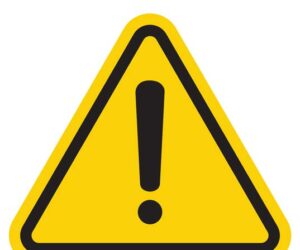Prevent Contaminated Beer: Tips from the Pros
Brewer: Mark Matheson
Brewery: Assets Grille & Southwest Brewing Co., Albequerque, N.M.
Years of experience: Four
Education: Bachelor’s degree in
fermentation science from University of California, Davis
House Beers: Cactus Kölsch, Duke City Amber, Copper Ale, St. Pablo’s Porter
The most common form of contamination is bacteria, which grow faster than yeast. The most common cause of contamination is pediococcus or lactobacillus bacteria. Some people are worried about wild yeast. They exist, but their growth rates are slower than bacteria. So concentrate on bacteria. They will give you sauerkraut and cheese smells.
The most common reason bacteria develops is because lines are not clean. The heat exchanger has the greatest potential for harboring bacteria. We rinse our heat exchanger with 180° F water for half an hour. That will kill everything. Either use heat or chlorine (bleach). I use heat because we already have hot water in the brewhouse that we use to mash in with and sparge with. And of course, we make sure hoses and fittings are sanitary.
When you are homebrewing, taste and smell the beer throughout the process. Most information will come from your nose. You can only taste sweet, sour, salty, and bitter on the tongue. But your nose can tell, in some cases, parts per billion. It’s a very discriminating testing device. If there’s something wrong, it should definitely show up in the aroma.
Look at your raw materials: yeast, hops, water. Make sure your water is fresh, clean, and potable. Make sure your malt is not old and the hops aren’t oxidized (oxidized hops have a cheesy aroma).
Clean everything. Use a teaspoon of bleach with five gallons of water.
To prevent contamination you need to have a vigorous fermentation. Whenever you introduce wort into the fermenter, your brewery yeast should outdo anything in there. (If this happens), you’ll have a good predictable fermentation with the flavor profile you want.
Use liquid yeast. If you use dry yeast, check your lag time. You want a short lag between the time you pitch the yeast and the time fermentation begins. You want to minimize the period of time in which cells are building up in volume. You don’t want it to take 12 hours. You want it to take five or six hours, and you want to get everything rolling and active so no contaminant can get in there and really establish itself.
Wild yeast builds up over time and could be caused by dirty equipment. Dried yeast is not a single pure strain. The drying process allows bacteria and wild yeast to be introduced. That’s why you should use liquid yeast packs, which are relatively easy to use. Just smack them and dump the yeast in. You’ll get vigorous fermentation. Or get yeast from a local brewer. They’re usually more than happy to give some to you.
Contamination is more of a concern for some styles of beer. With lighter beers any problems are noticeable, where with a stout you aren’t necessarily going to notice as much. Some styles, of course, pose a greater potential for contamination. If the fruit in a fruit beer is not pasteurized, it could cause problems. Lagers are more problematic because at colder temperatures
fermentation is not as fast.
Various methods of brewing don’t contribute to contamination that much. A lot of people say German brewers don’t want to dry hop because it will introduce contamination. But hops are anti-bacterial themselves, so they do have bacteria on them. But it doesn’t affect your beer. The British have been dry hopping for centuries.
If you are a homebrewer, try not to open up your fermenter all the time. Open it just to get a sample and a (hydrometer) reading when you’re really sure you’re close to terminal gravity. That way you’re not always exposing the fermenting beer to the air.



